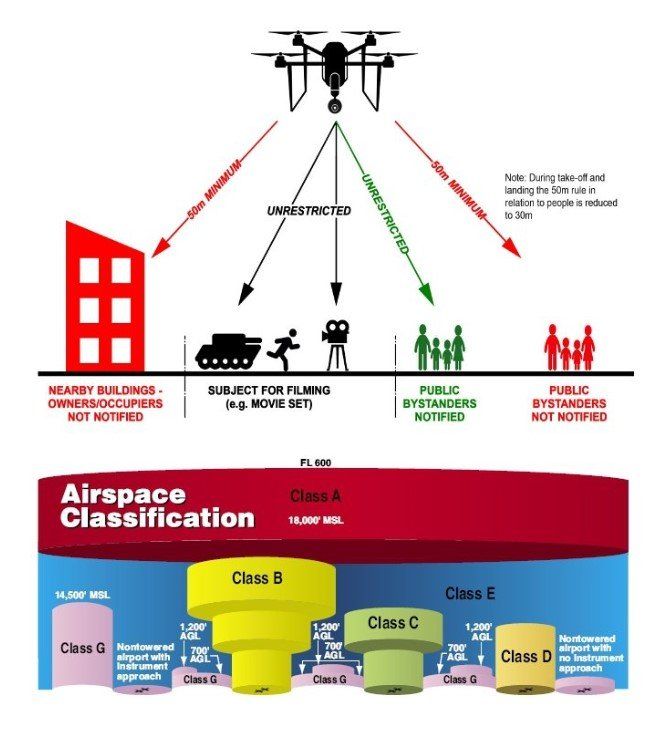CAA RULES

CAA RULES & REGULATIONS FOR UAV OPERATORS
(1) The person in charge of a SUA (small unmanned surveillance aircraft) must not fly the
aircraft in any of the circumstances described in paragraph (2) except in
accordance with a permission issued by the CAA.
(2) The circumstances referred to in paragraph (1) are:
(a) over or within 150 metres of any congested area;
(b) over or within 150 metres of an organised open-air assembly of more than
1,000 persons;
(c) within 50 metres of any vessel, vehicle or structure which is not under the
control of the person in charge of the aircraft;
or
(d) subject to paragraphs (3) and (4), within 50 metres of any person.
(3) Subject to paragraph (4), during take-off or landing, a small unmanned
surveillance aircraft must not be flown within 30 metres of any person.
(4) Paragraphs (2)(d) and (3) do not apply to the person in charge of the small
unmanned surveillance aircraft or a person under the control of the person in
charge of the aircraft.
(5) In this article 'a small unmanned surveillance aircraft' means a small unmanned
aircraft which is equipped to undertake any form of surveillance or data
acquisition.
(1) A person must not cause or permit any article or animal (whether or not
attached to a parachute) to be dropped from a small unmanned aircraft so as to
endanger persons or property.
(2) The person in charge of a SUA may only fly the aircraft if
reasonably satisfied that the flight can safely be made.
(3) The person in charge of a SUA must maintain direct,
unaided visual contact with the aircraft sufficient to monitor its flight path in
relation to other aircraft, persons, vehicles, vessels and structures for the
purpose of avoiding collisions.
(4) The person in charge of a SUA which has a mass of more
than 7kg excluding its fuel but including any articles or equipment installed in or
attached to the aircraft at the commencement of its flight, must not fly the
aircraft:
(a) in Class A, C, D or E airspace unless the permission of the appropriate air
traffic control unit has been obtained;
(b) within an aerodrome traffic zone during the notified hours of watch of the
air traffic control unit (if any) at that aerodrome unless the permission of
any such air traffic control unit has been obtained;
or
(c) at a height of more than 400 feet above the surface unless it is flying in
airspace described in sub-paragraph (a) or (b) and in accordance with the
requirements for that airspace.
(5) The person in charge of a small unmanned aircraft must not fly the aircraft for
the purposes of commercial operations except in accordance with a permission granted by
the CAA
Although the restrictions are extremely detailed we will give each project a risk assessment on an individual basis
We require the permission of the landowner to take off and land
We cannot fly directly over people, roads & buildings which are not under the control of the pilot & the film crew where a minimum of 50 meters distance from these objects is required.
If we are flying near to an airport or aerodrome, we may need to contact
Air Traffic Control
to check with them that it is safe to operate at a certain height on a specified date and time. Referring to the NOTAMs for flights in the surrounding area
Sometimes it may be necessary to do a pre-flight visit to a location to ascertain if it will be possible to fly. However, usually just a post code or location of where and what we are filming will be enough for us to do a pre-flight survey online to see if there are any flight restrictions which we need to be aware of.
The Pilot
ALWAYS
has final say if flying conditions and locations can be ‘deemed safe”.
HAWKAS is governed and regulated by the CAA
The CAA rules & regulations must to be adhered to for our insurance and public liability cover to be valid.






